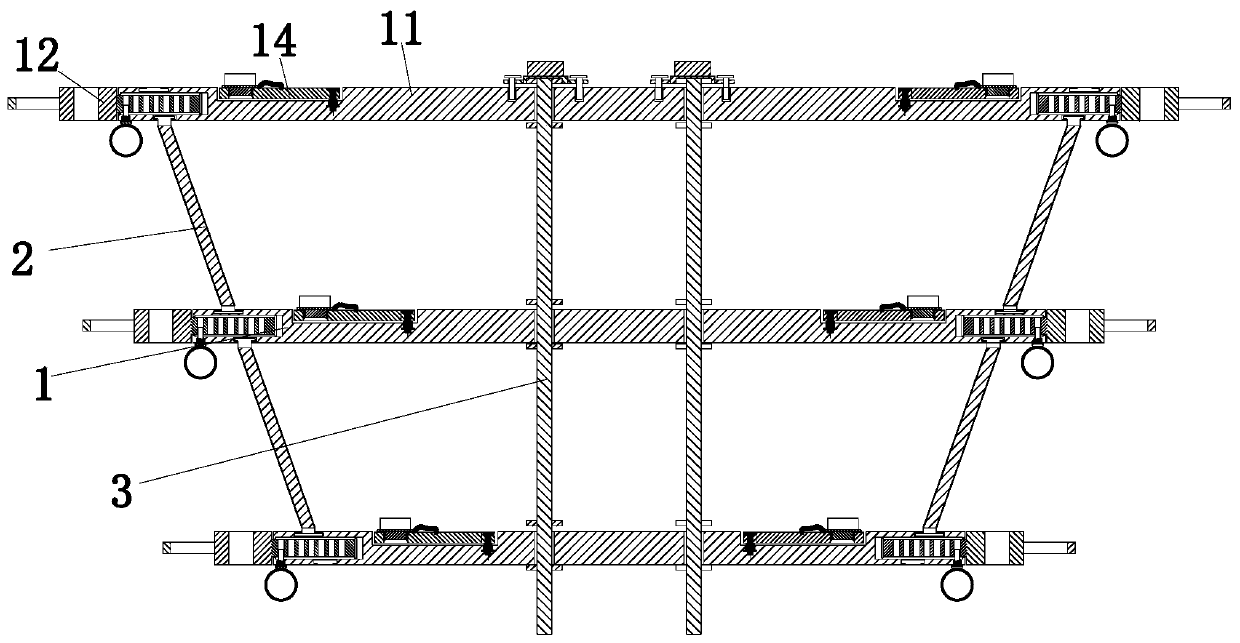Electric line fitting wire cross arm
A power line and cross-arm technology, which is applied in the spatial arrangement/configuration of cables, building types, buildings, etc., can solve the problems of no connection of cross-arms, wire contact interference, poor wind resistance, etc., to improve wind resistance, The effect of improving stability and improving structural stability
- Summary
- Abstract
- Description
- Claims
- Application Information
AI Technical Summary
Problems solved by technology
Method used
Image
Examples
Embodiment Construction
[0035] Embodiments of the present invention will be described below with reference to the drawings. In the process, in order to ensure the clarity and convenience of illustration, we may exaggerate the width of the lines or the size of the constituent elements in the diagram.
[0036] In addition, the following terms are defined based on the functions in the present invention, and may be different according to the user's or operator's intention or practice. Therefore, these terms are defined based on the entire content of this specification.
[0037] Such as Figure 1 to Figure 9 As shown, a wire cross arm for power line accessories includes a cross arm group 1, a reinforcing rod 2, a positioning frame 3 and a fixing device 4. A reinforcing rod 2 is clamped between the cross arm groups 1, and the reinforcing rod 2 Left and right symmetrical arrangements, a positioning frame 3 is provided in the middle of the cross-arm group 1, and a fixing device 4 is installed in the middle...
PUM
 Login to View More
Login to View More Abstract
Description
Claims
Application Information
 Login to View More
Login to View More - R&D
- Intellectual Property
- Life Sciences
- Materials
- Tech Scout
- Unparalleled Data Quality
- Higher Quality Content
- 60% Fewer Hallucinations
Browse by: Latest US Patents, China's latest patents, Technical Efficacy Thesaurus, Application Domain, Technology Topic, Popular Technical Reports.
© 2025 PatSnap. All rights reserved.Legal|Privacy policy|Modern Slavery Act Transparency Statement|Sitemap|About US| Contact US: help@patsnap.com



